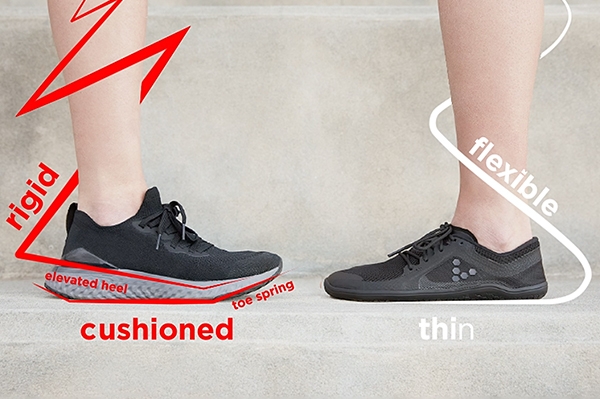Running shoes are athletic shoes designed for running. They offer support, comfort, and motion control. The best part is, they’re lightweight. This makes them not only ideal for running but one of today’s most popular choices for day-to-day use.
It wasn’t always that way. Early running shoes were scrappy, uncomfortable, and unattractive by today’s standards. When you think about it, the history of the running shoe is a bit comical.
Late 19th Century: Early running shoes were basic and often consisted of leather or canvas uppers with a hard leather sole. Spikes were added for better traction in racing.
Early 20th Century: The design of running shoes continued to evolve, with the introduction of rubber soles and more lightweight materials. Marathon spikes, designed for long-distance running, gained popularity.
1950s: The 1950s saw advancements in running shoe design with the introduction of cushioning materials such as EVA (ethylene-vinyl acetate) foam. This provided better shock absorption and comfort.
1960s: Companies like Adidas and Puma introduced running shoes with innovative designs and features. Track and field shoes became more specialized for different events.
1970s: The 1970s marked the beginning of the jogging and running boom. Nike, founded in 1971, played a significant role in the evolution of running shoes. The Nike Waffle Trainer, introduced in 1974, featured a waffle-patterned sole for better traction.
1980s: The 1980s saw the introduction of technologies such as air cushioning, with Nike's Air Max series becoming popular. Brands like Asics and New Balance also gained prominence during this decade.
1990s: Running shoe design continued to advance with the incorporation of gel cushioning technology, stability features, and improved materials. Companies focused on developing shoes for specific foot types and gait patterns.
2000s to Present: The 21st century brought further innovations, including lightweight materials, advanced cushioning technologies, and biomechanical analysis for personalized shoe design. The minimalist and barefoot running movements gained popularity, leading to the development of minimalist and zero-drop running shoes.


